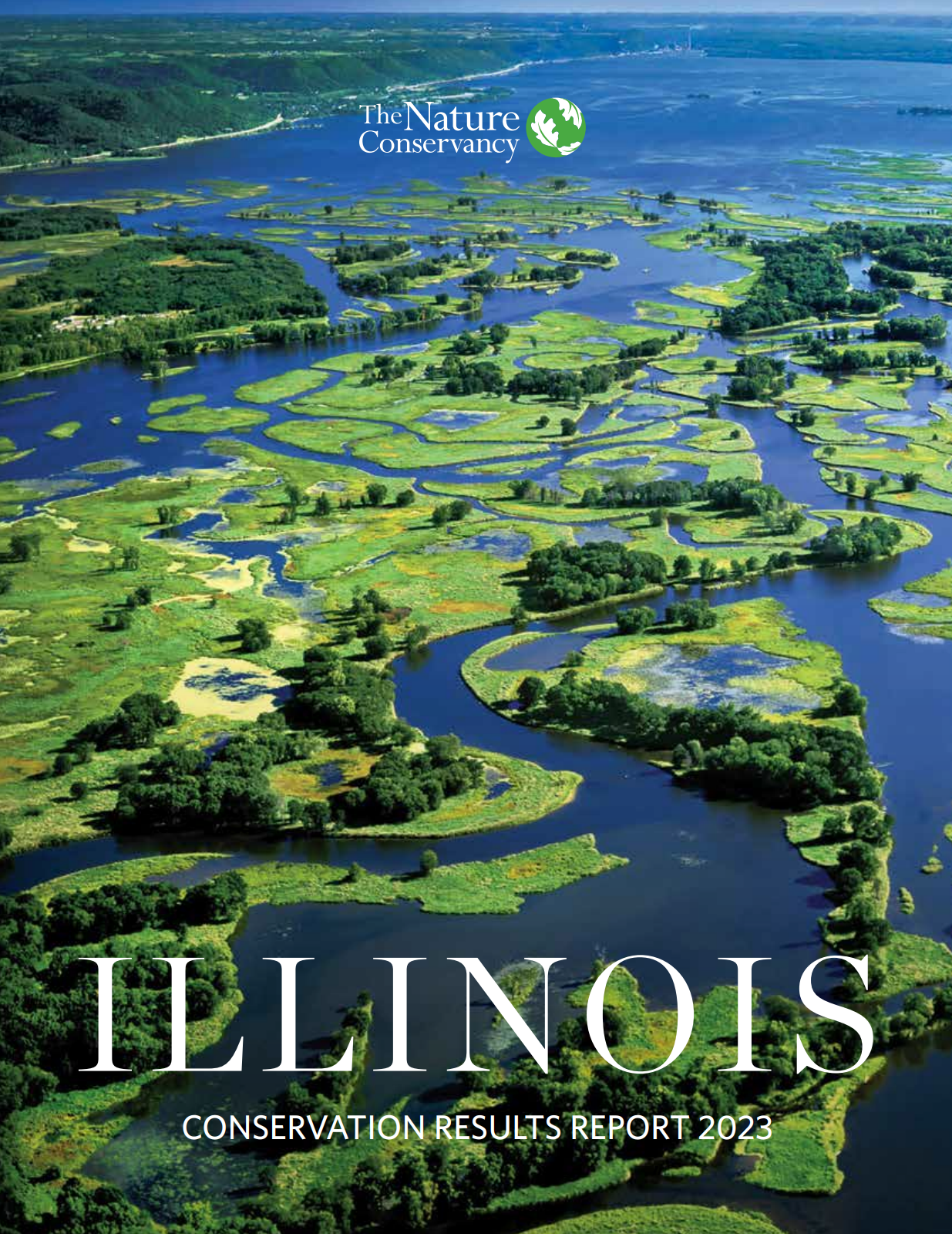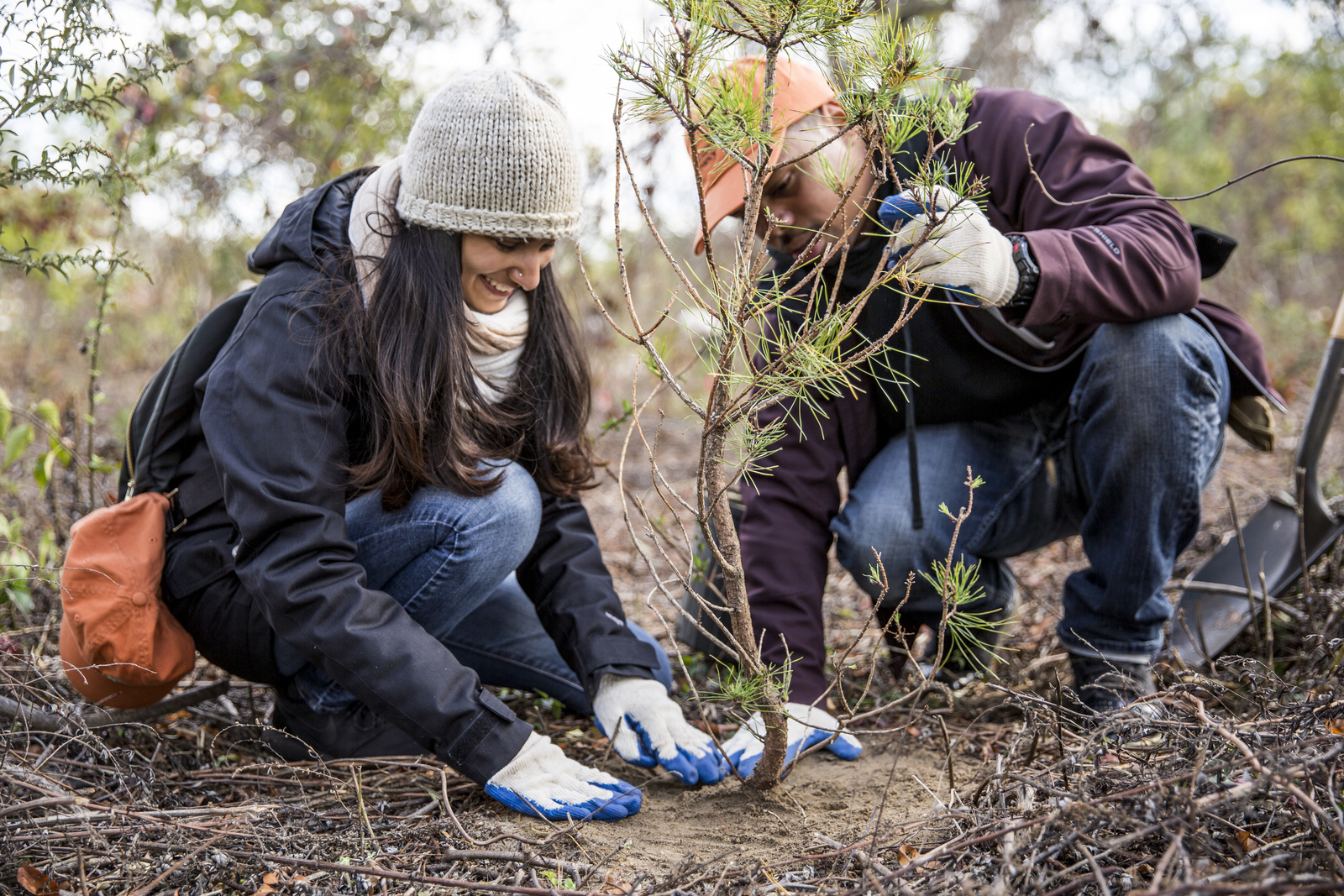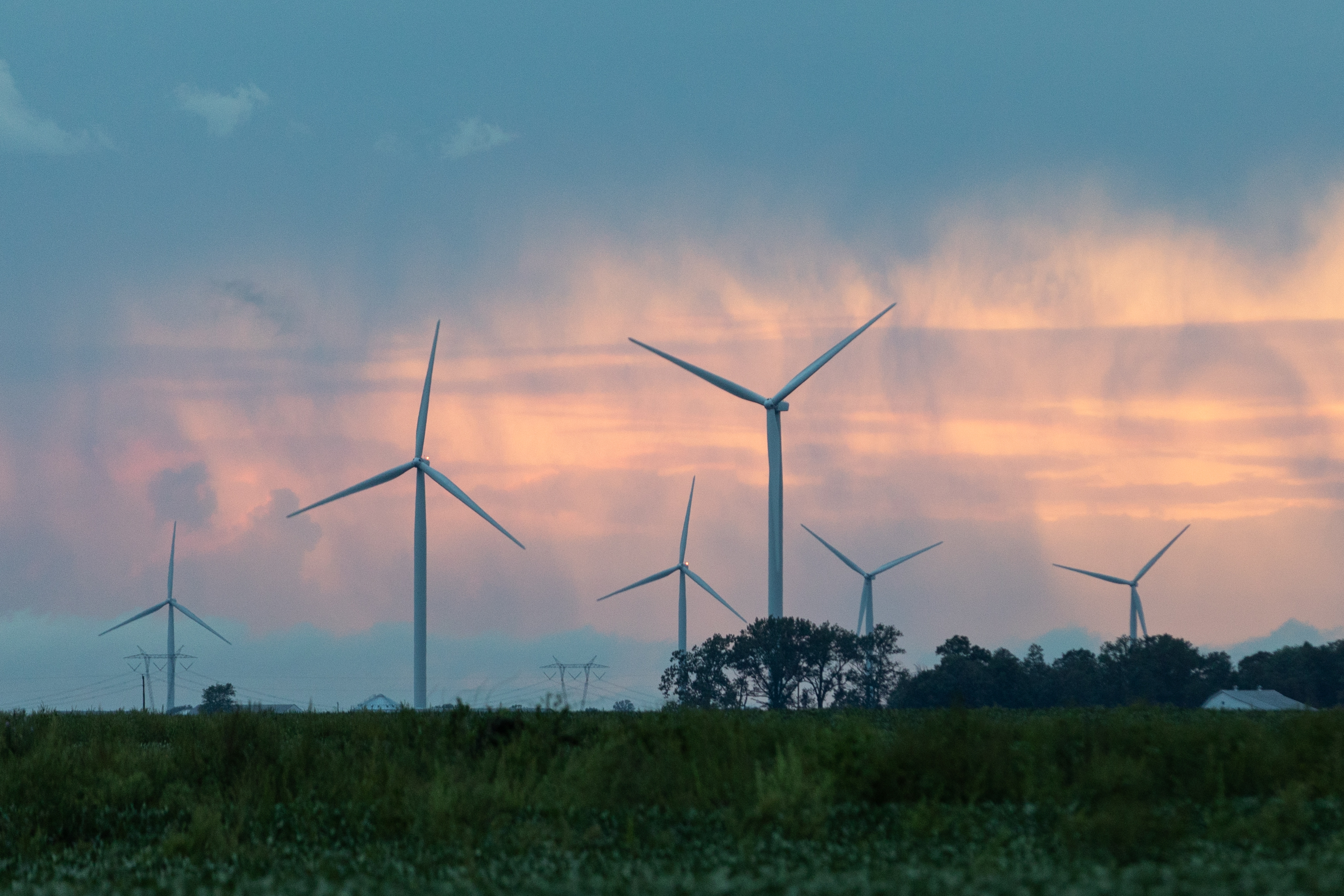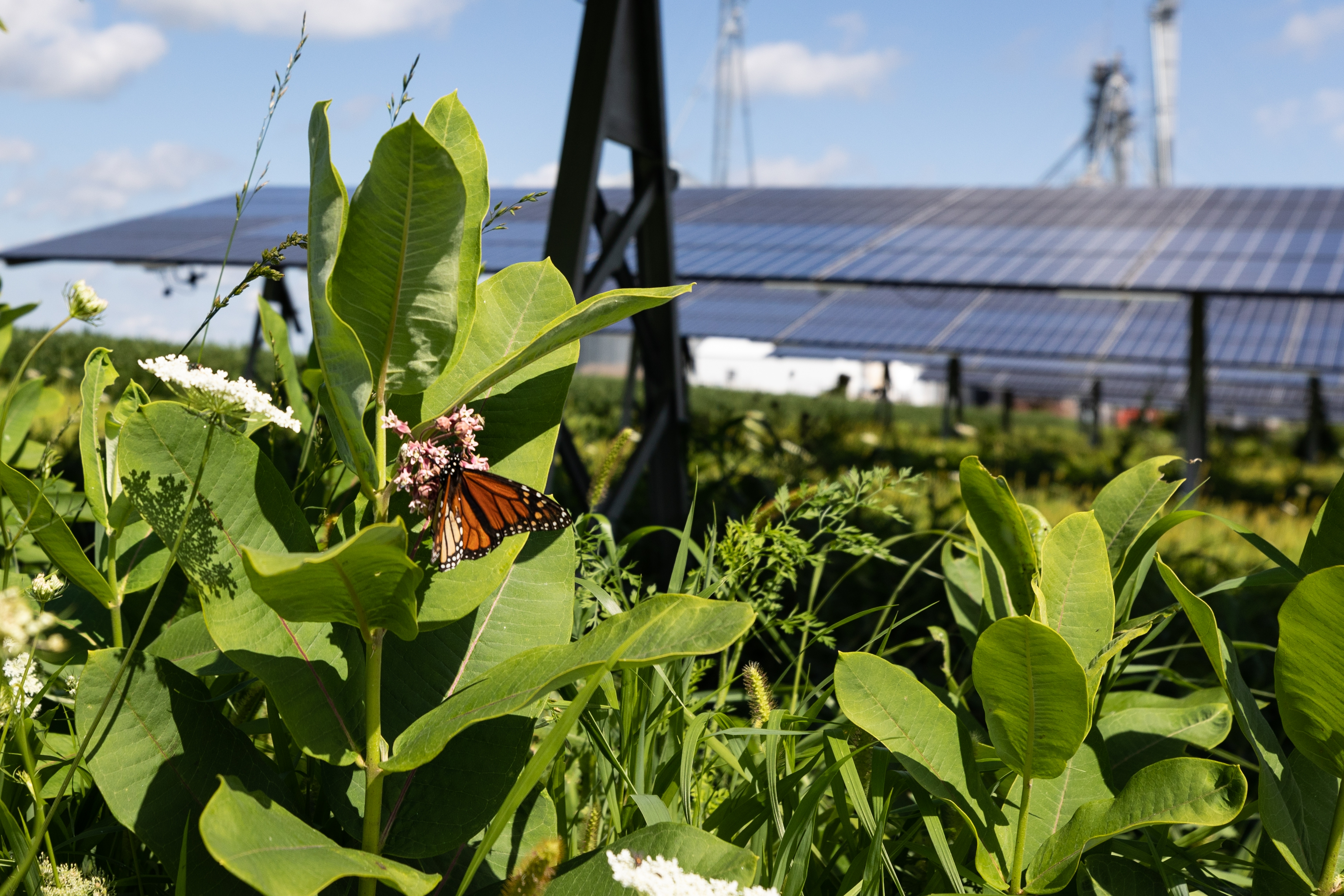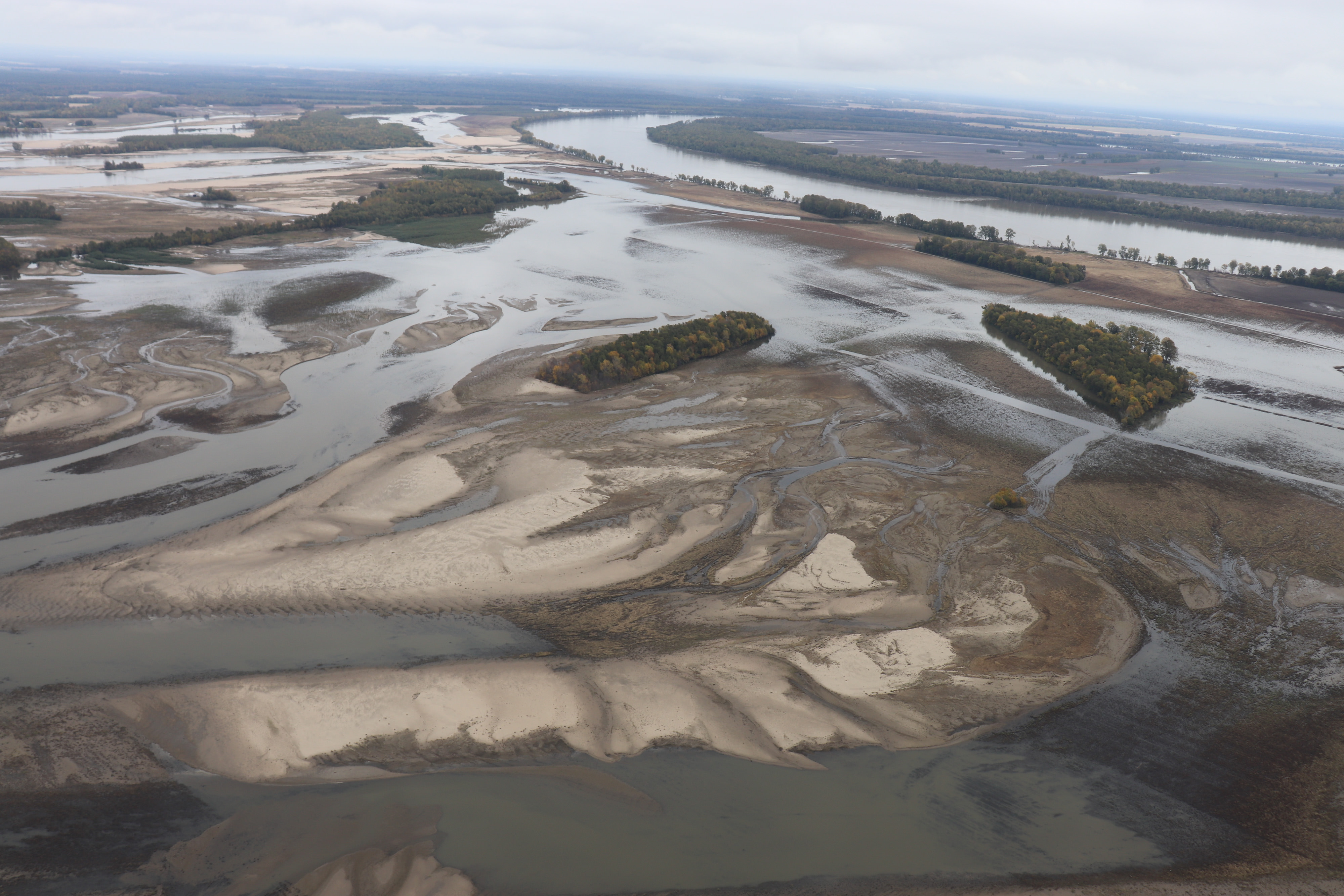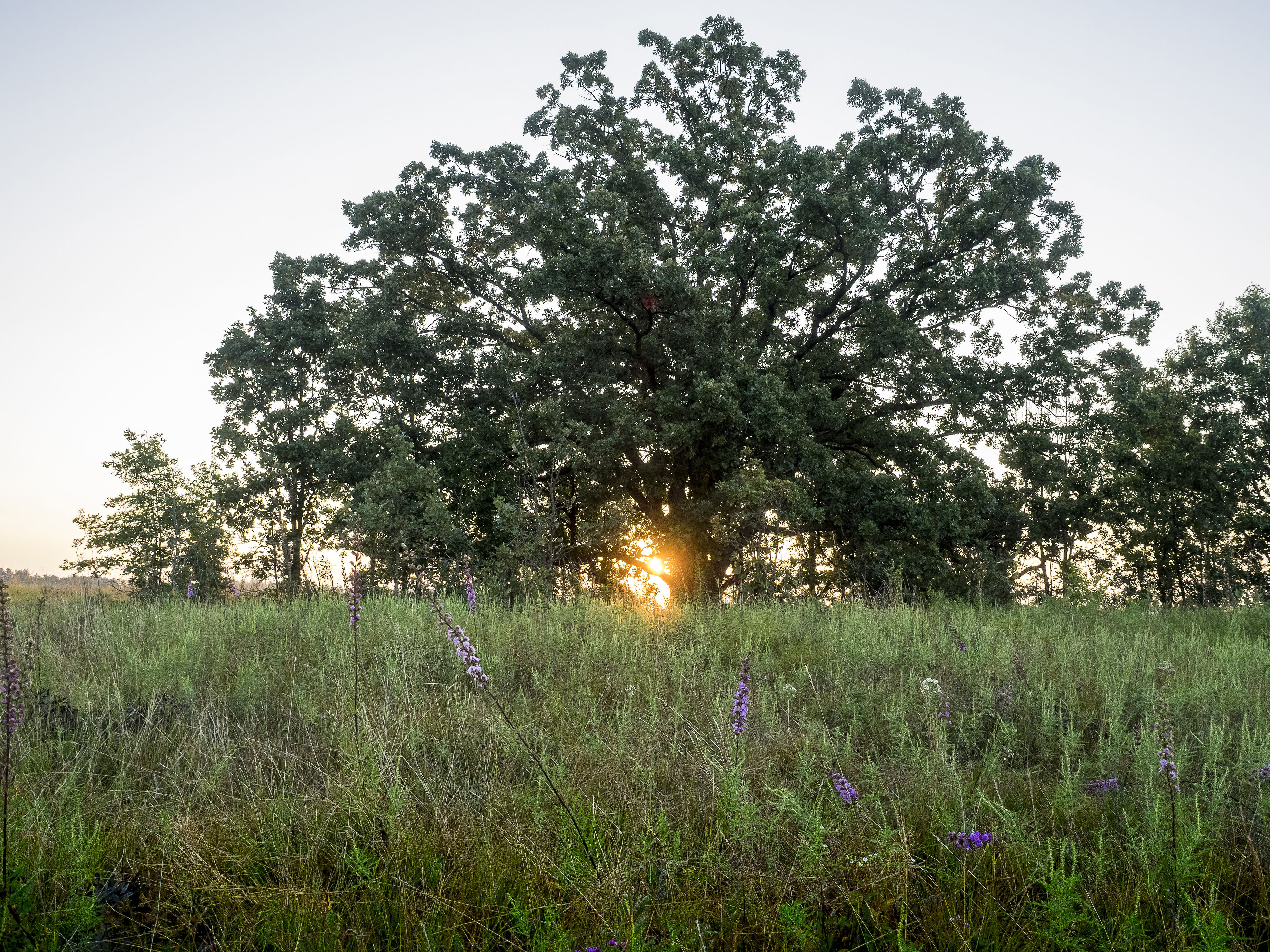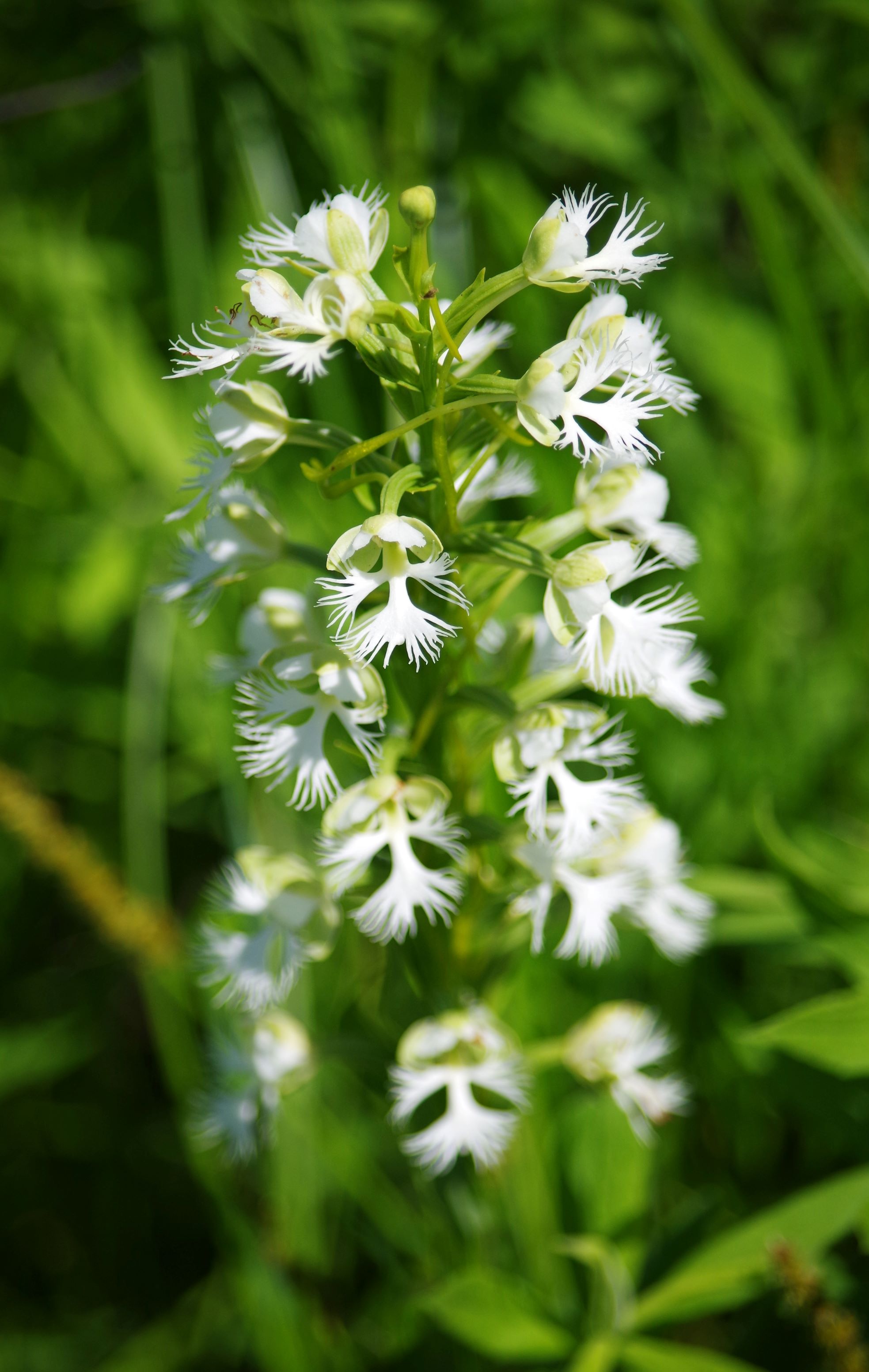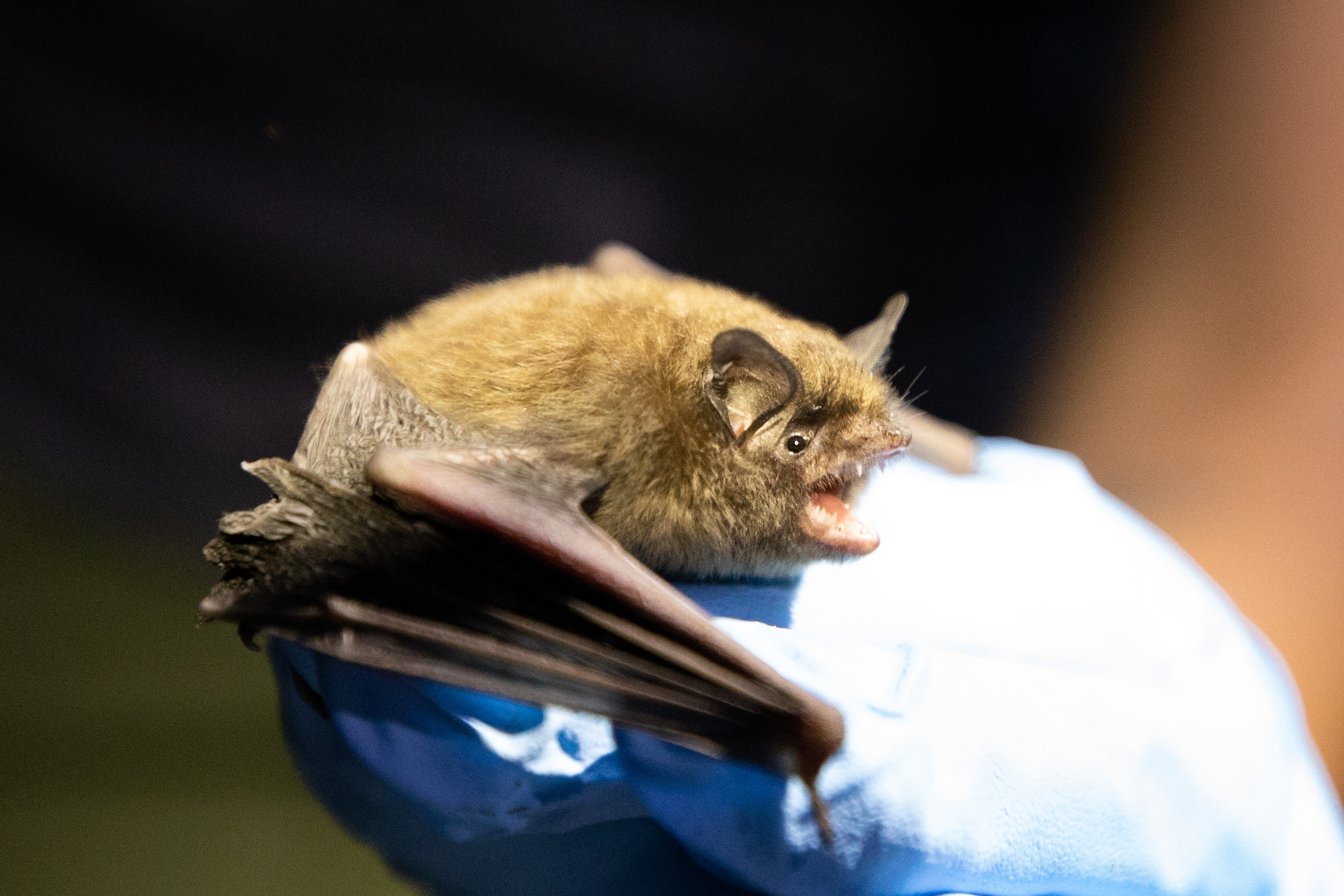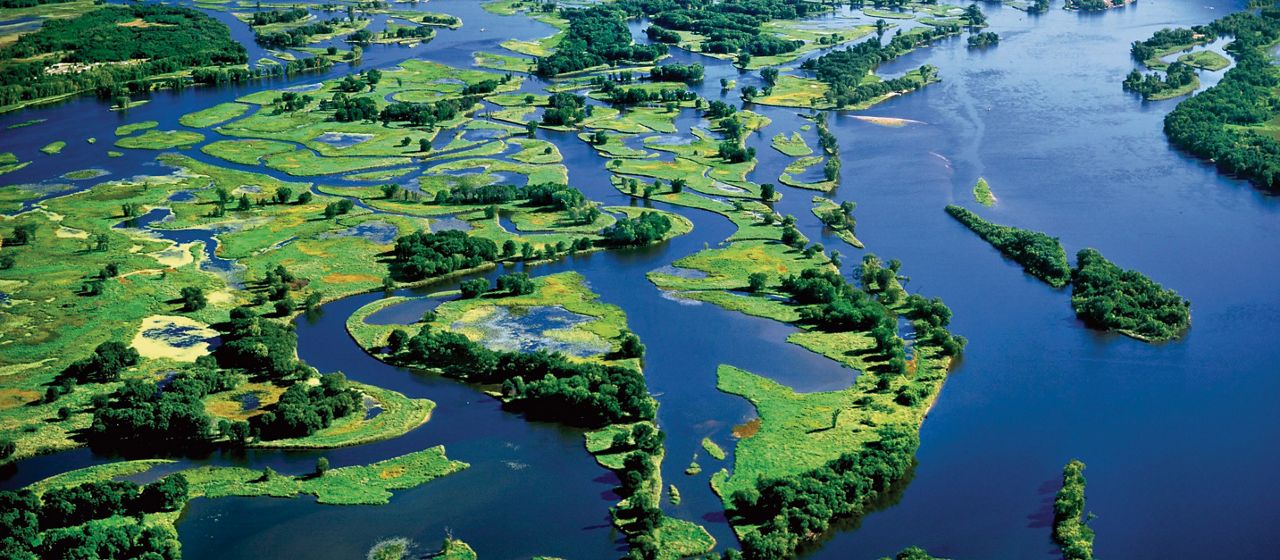
Mississippi River Forested islands create a maze in the Mississippi River. © Robert J. Hurt
Download
Read the full report to learn how we're collaborating with partners to pursue clean energy policies, connect young people to nature & more.
DOWNLOADRestoring Our Connected Waters
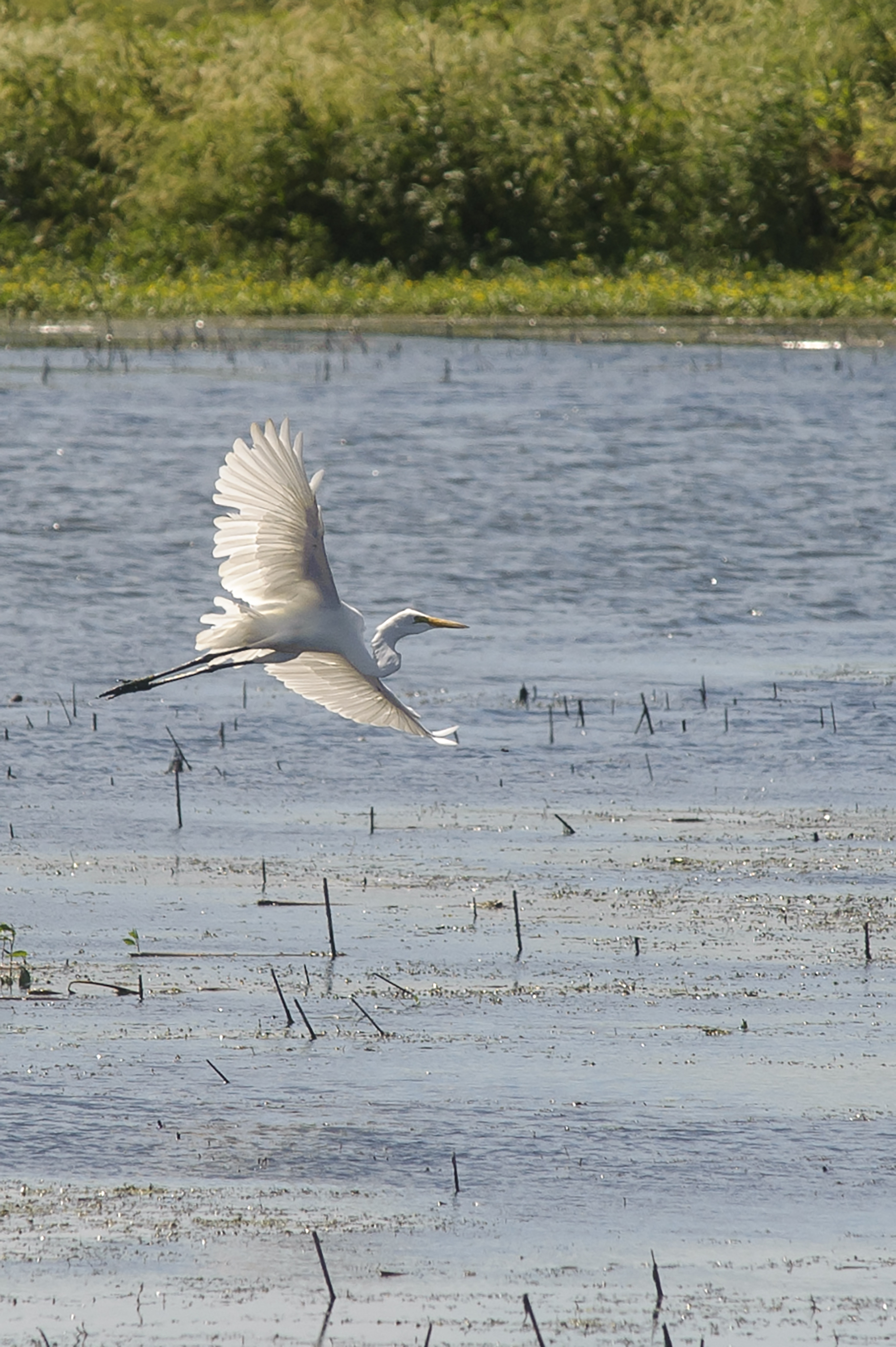
A Systems Approach to Managing Large Rivers
Rivers, of course, do not recognize human-created boundaries, such as state borders and property lines. However, for management purposes, large rivers like the Mississippi are often figuratively carved up, with responsibility for different sections assigned to various entities. While well-intentioned, this decentralized approach makes it difficult to coordinate efforts and ensure optimal results for an entire river, including its tributaries and floodplains. Some parts receive high-quality stewardship while others are left to decline.
“Large rivers are linear systems, ecologically and hydrologically,” says Bryan Hopkins, Illinois and Upper Mississippi River director of freshwater conservation for The Nature Conservancy (TNC). “We need to follow their lead and adopt a systems approach to restoring them.”
To achieve this holistic vision, TNC’s Midwest team is collaborating with conservation partners to look at river sections in need of restoration and create frameworks for cross-coordination efforts.
A MASTER PLAN FOR POOL 19
Hopkins points to Pool 19 on the Upper Mississippi—along the southern Iowa/Illinois border—as an example of a deteriorated river section. Part of Pool 19 is privately owned and has not benefited from restoration work by government and non-government organizations. In addition, a lock and dam installed in 1910 caused the loss of beneficial river islands and floodplains.
TNC has invited partners—state and federal agencies, county officials, nongovernmental organizations and affected communities—to a series of planning workshops in 2024. Together, we will create a collaborative master plan for saving Pool 19. One likely strategy: restoring island complexes, which will decrease erosion caused by wind and help bring back plants and wildlife.
In addition to local Midwest efforts like Pool 19, TNC’s Mississippi River Basin program has begun pursuing broader discussions about whole-river governance at the federal level.
A HISTORY OF COOPERATIVE MANAGEMENT
TNC’s long history of collaborating with partners to manage rivers will help foster and inform teamwork at Pool 19 and elsewhere. For example, TNC’s Emiquon Preserve provides a standard for managing connected wetland systems via a water control structure with the adjacent Illinois River. Emiquon’s location has led to active cooperation between TNC and the U.S. Fish and Wildlife Service. “TNC’s systems approach is providing templates for what can be done elsewhere on rivers,” Hopkins says.
Quote: Bryan Hopkins
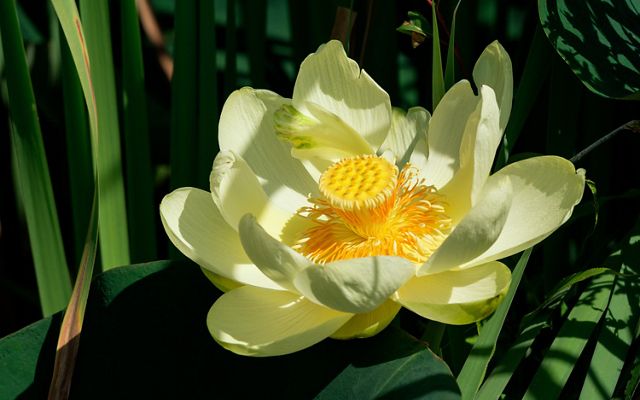
Large rivers are linear systems ... We need to follow their lead and adopt a systems approach to restoring them.
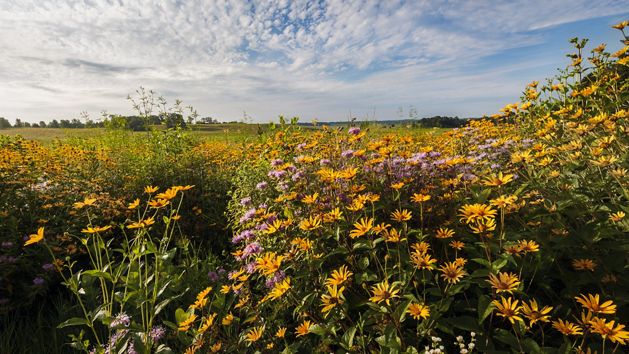
We Can’t Protect Nature Without You
Sign up to receive monthly conservation news and updates from Illinois.
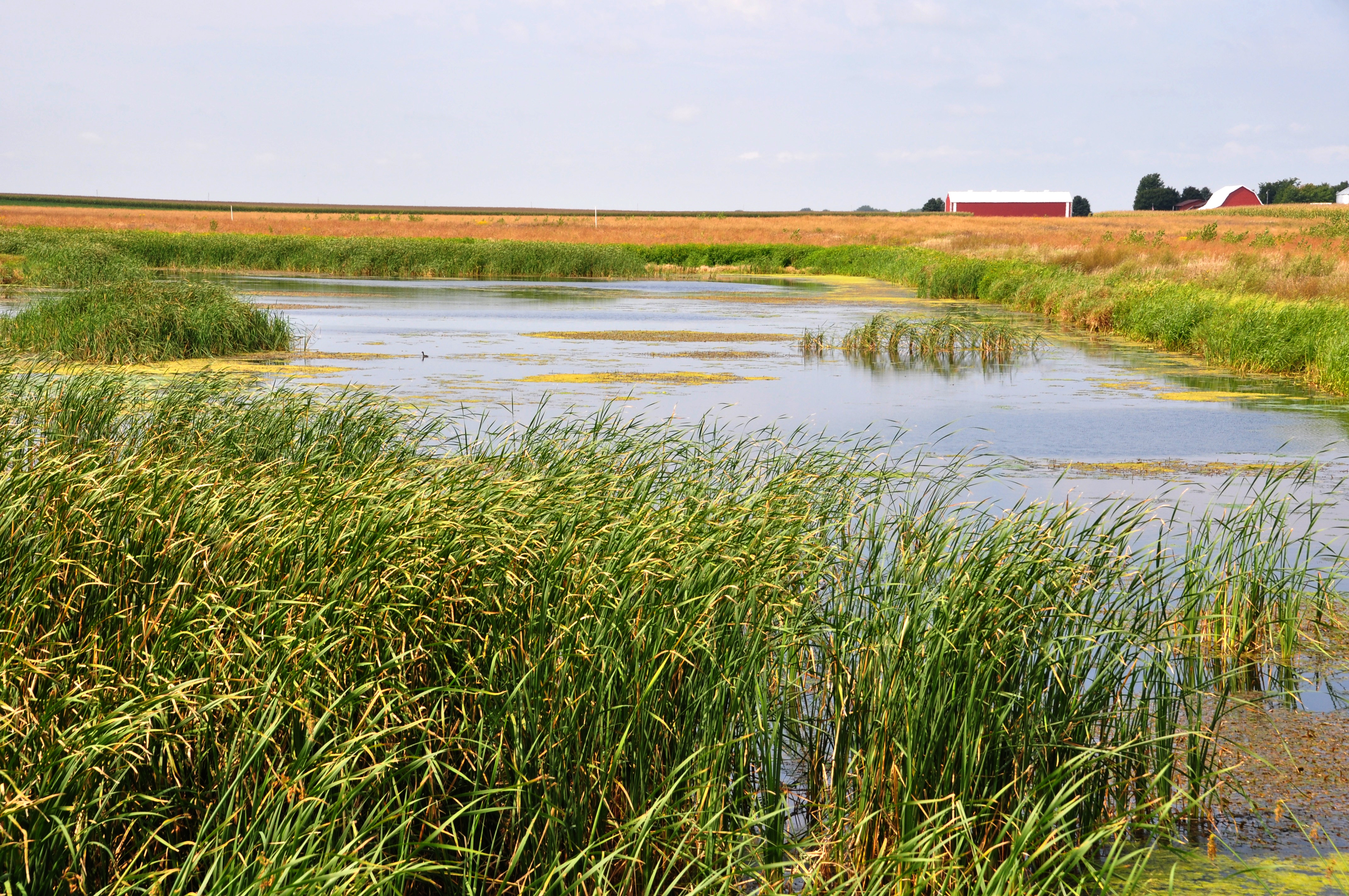
Science-Based Solutions for Agricultural Runoff
Adding constructed wetlands near farm fields can successfully capture and reduce the amount of excess nutrients in water that runs off croplands through subsurface drainage tiles—by nearly 50%. That was the conclusion of a study by TNC researchers and partners, which involved testing water samples from three farm-based wetlands over a 12-year period. TNC and partners are experimenting with other strategies for reducing nutrient runoff as well. “One question we’re studying is how the timing of fertilizer application effects nitrogen levels in runoff,” says Maria Lemke, director of science, TNC in Illinois.
EVEN TINY WETLANDS HELP
For more than 20 years, TNC has partnered with farmers in the Mackinaw River watershed, in central Illinois, to improve water quality. When water drains off croplands, excess nutrients get into rivers and streams, which can infiltrate drinking water, damage wildlife habitats and exacerbate the Gulf of Mexico’s “dead zone.” Applied at scale across farms, constructed wetlands—which naturally filter out and convert pollutants in water—have the potential to dramatically improve water quality.
A key takeaway for farmers considering constructed wetlands: Even tiny wetlands have big impacts, reducing excess nitrate-nitrogen in subsurface runoff by 38% to 50%.
MULTIPLE SOLUTIONS AT ONCE
TNC is also testing nitrogen management, cover crops and other regenerative agriculture practices, both independently and alongside wetlands. In one experiment, scientists found that applying nitrogen fertilizer to corn fields in spring—versus fall, as is common—significantly reduced the amount of nitrate lost through subsurface drainage before spring crops were established. “By applying nitrogen when the corn can actually use it, we saw an immediate reduction in nitrate losses from the farm field we tested,” Lemke says.
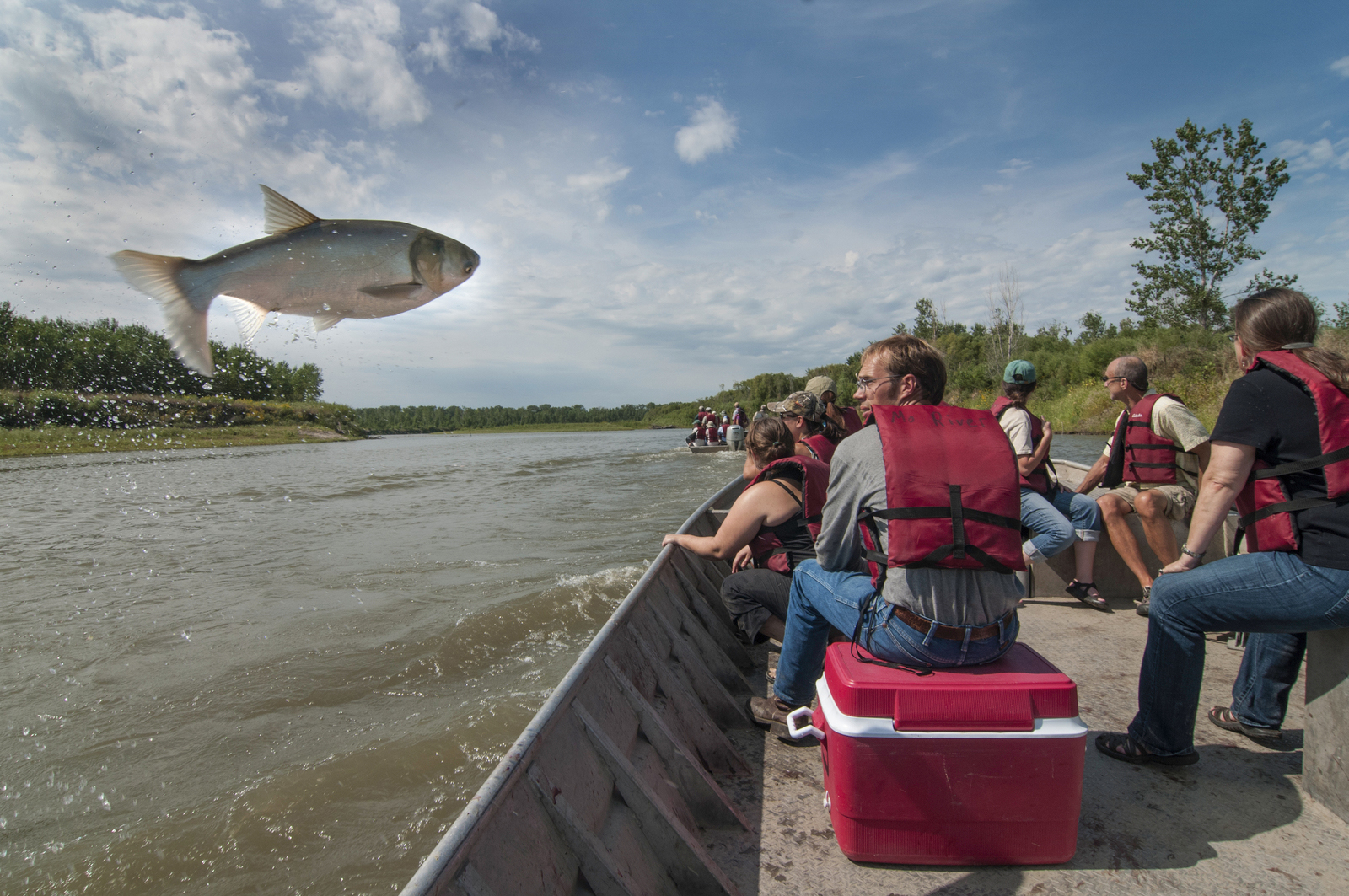
Testing AI and Sonar for Invasive Carp Control
Nonnative carp species—silver, bighead, grass and common—are wreaking havoc on the Illinois and Mississippi River ecosystems by eating plankton and vegetation that native fish and mussels depend on. Large numbers of silver and bighead carp entered TNC’s Emiquon Preserve as tiny larval fish during flooding nearly a decade ago.
Effective ways of managing these carp are urgently needed. At Emiquon and elsewhere, commercial anglers create commotion to scare fish into gill nets. However, this spook-and-catch approach is barely making a dent in the robust populations.
“Carp are more sensitive to their environments than we give them credit for,” says Randy Smith, Illinois River project director. “When there is even a small disturbance, most carp hide.”
What’s needed are larger-scale approaches that can deplete and contain carp populations. To this end, TNC is collaborating with partners to test two innovations at Emiquon.
SEPARATING FISH ON THE RIVER
In 2020, Emiquon staff began partnering with the Illinois Natural History Survey and Whooshh Innovations to test a portable fish ladder designed to attract and sort fish along waterways. Equipped with a fish version of facial recognition software and powered by artificial intelligence (AI), the ladder is designed to recognize and capture invasive carp in a container while allowing native fish to travel through the system.
Scientists have learned a number of lessons from piloting the fish ladder on the Illinois River directly adjacent to Emiquon. For instance, fish are attracted to Emiquon’s water, which was pulled from the preserve’s nutrient-rich wetlands. When Emiquon water was used with the fish ladder, carp swam up the ladder. But when less fertile river water was used, carp ignored the ladder.
Last fall, the U.S. Geological Survey (USGS) launched semi-autonomous kayaks equipped with side-scanning sonar onto Emiquon’s waters. The goals: identify approximate numbers of invasive carp and where they hide while testing the use of underwater sound to herd and capture carp.
Over the next two years, USGS will deploy the kayaks to collect carp data, which will be analyzed using AI. TNC hopes the information will guide a large-scale removal event where semi-truckloads of carp are flushed out and corralled. The project is led by USGS fish biologist Josey Ridgway, who began using recreation-grade sonar technology to survey fish about six years ago and recently added unmanned kayaks to the mix.
“If this works, it will be a really big deal for wetland managers,” says Smith. “It would take many, many years to achieve the same level of fish removal using traditional methods.”
Tackling Climate Change

A Multi-Strategy Approach to Aiding Nature and People
Every fraction of a degree that we can lower global warming matters to wildlife & ecosystems as well as to the people at risk of floods, droughts & other climate-related emergencies. We've been contributing to TNC’s global climate goals by planting more trees, advocating for renewable energy & helping people affected by flooding, heat waves & more.
Our Climate Strategies
Protecting Land for Nature and People
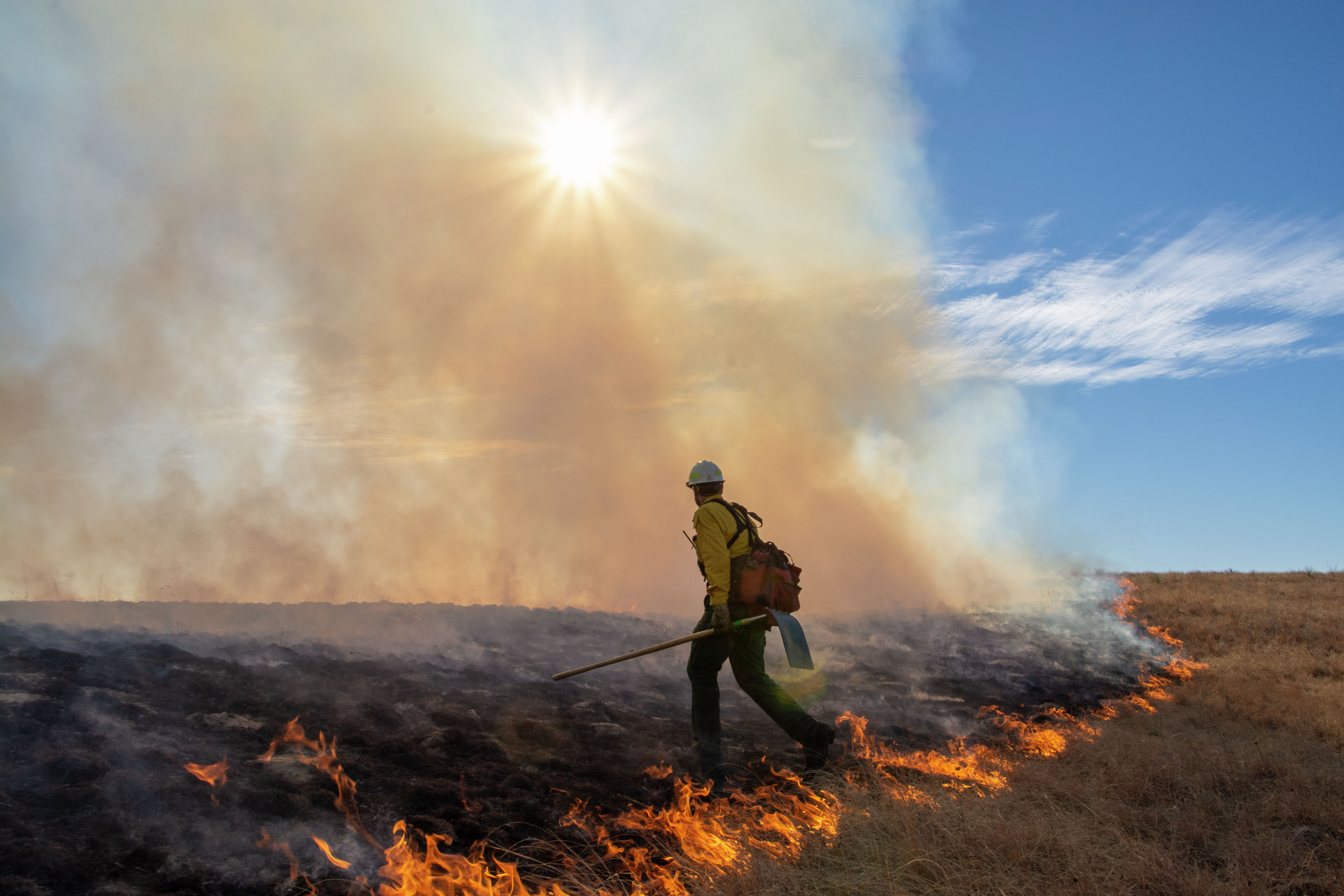
TNC in Illinois Is a Leader in Prescribed Fire
Indigenous peoples used fire in grasslands to encourage new plant growth and lure bison and other game for hunting. Borrowing from that tradition, TNC has been using “good fire” for more than 60 years to keep native habitats healthy.
“If we don’t use fire, our prairies, wetlands and oak woodlands become choked with dense brush—exotic shrubs and small trees—that end up degrading native habitat for lack of sunlight,” says TNC’s Bill Kleiman, Illinois fire manager and project director at Nachusa Grasslands.
Recognizing prescribed fire’s importance, TNC in Illinois has made it a priority to increase knowledge and use of this conservation tool.
EXPANDING OUR BURN CREWS
To ensure safety and effectiveness, TNC has adopted fire standards set by the National Wildfire Coordinating Group. To become licensed burn crew members or managers, our staff and volunteers must obtain the same strenuous training and certifications as federal wildland firefighters. “Burning more acres typically comes down to needing more people trained to do this work,” Kleiman says. TNC is helping to meet this resource challenge by providing and encouraging training opportunities, including the following:
- Prescribed burns at TNC preserves and on partner lands provide burn crews with hands-on opportunities to practice fire skills.
- TNC encourages our fire crews to sign up to fight wildfires during summer months. Besides aiding people and nature in danger, TNC crews get to perform vital fire skills when suppressing fires that are also needed for managing prescribed burns.
- TNC offers an annual wildfire suppression training program in Belize, in partnership with TIDE Belize and Belize National Parks, for staff to gain needed skills and licenses.
Currently, 18 Illinois staff serve on TNC burn crews, and six Illinois staff are now certified burn bosses. Volunteers also play a critical role. At Nachusa alone, 25 of the 47 fire crew members were volunteers in 2023.
GROWING THE KNOWLEDGE BASE
TNC is also advancing prescribed fire efforts through advocacy and research. Two TNC burn bosses—Kleiman and Rob Littiken, project director, Kankakee Sands-Illinois—serve as directors on the Illinois Prescribed Fire Council. One of the council’s key projects is focused on mapping where all prescribed burns are performed in Illinois and assessing how many more acres need to be burned to improve ecosystems.
In addition, TNC scientists and partners are studying how to increase the effectiveness of prescribed fire. The ongoing research aims to uncover, for example, how adjusting the timing of fires can further improve habitat health.
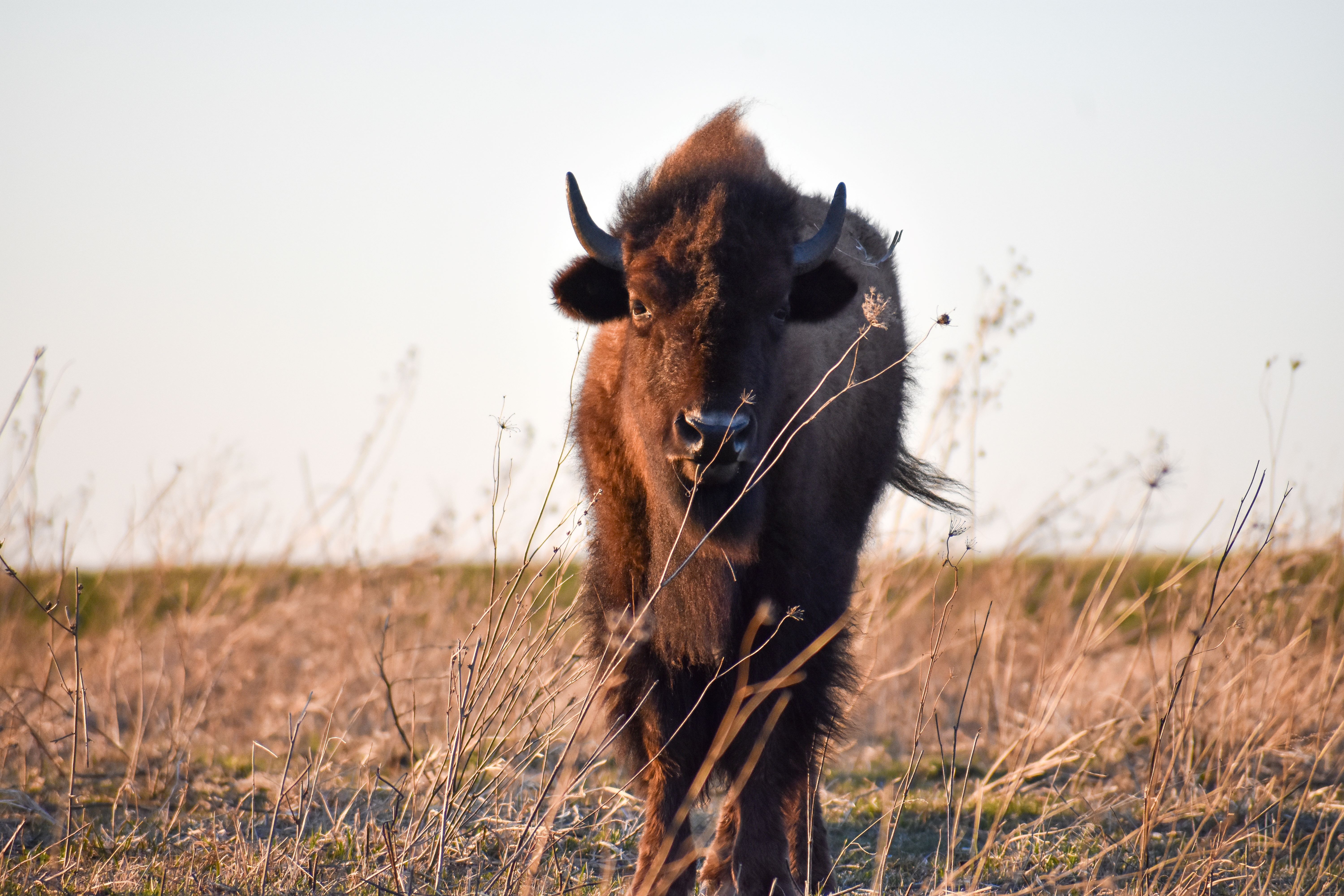
How Bison Are Affecting Other Wildlife
Bison were reintroduced at TNC’s Nachusa Grasslands Preserve in 2014. Today, about 100 adults and their calves live on 1,500 of the preserve’s 4,000 acres.
How have these immense grazing animals affected other wildlife? Researchers, including TNC’s Elizabeth Bach, ecosystem restoration scientist, assessed the bison’s impact during their first five years at the preserve. The key takeaway: “Bison are influencing animal communities to a greater extent than plant communities,” says Bach.
ANIMALS AND INSECTS
On the insect front, dung beetles—which follow the dung supply—have been thriving since the bison’s arrival. In addition, groups of native bees and wasps are building their underground nests in bison wallows, which are indentations created when the mammals roll on the ground.
Another finding: On full moon nights, mice and other rodents have adjusted their foraging in areas with reduced vegetation cover due to bison grazing. The reason is likely to dodge predators. To avoid moonlight, they look for food earlier in the evening or later at night.
PLANTS
At Nachusa, researchers did not find any changes in the diversity of plants in the first five years after the bison arrived. The preserve has intentionally kept the number of bison to about 100 adults, which has helped ensure a light grazing rate. This may be why no changes were found in the plant community. Alternatively, it could be that Nachusa had already reached an upper threshold of plant diversity prior to the bison’s introduction. Studies of Kansas prairies found increases in plant species within five years of introducing bison. But those prairies had less plant diversity before the bison moved in than Nachusa did.
Bach and her collaborators will continue studying the bison’s impact. “We’re dedicated to monitoring for the long term,” she says.
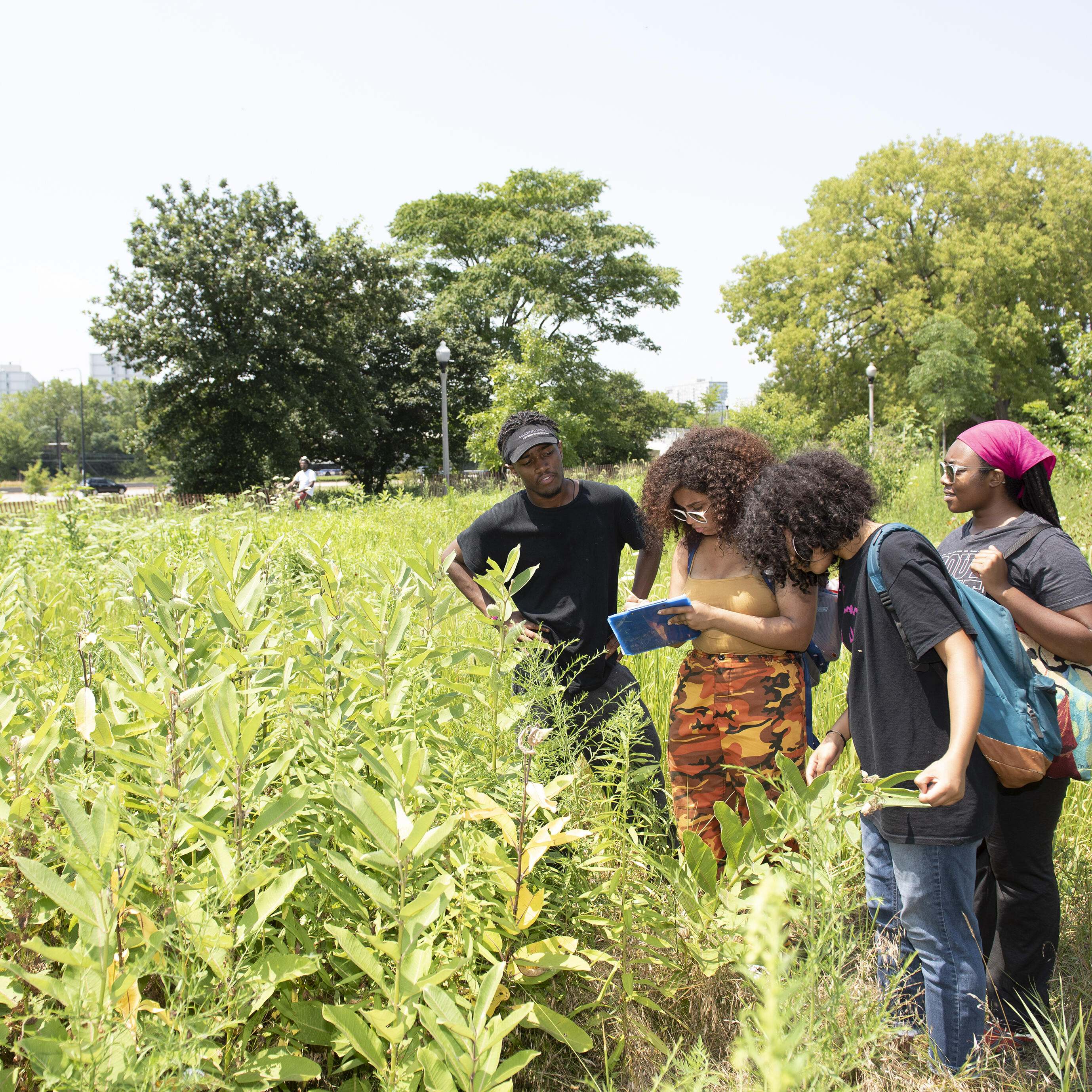
Creating Tomorrow’s Nature Advocates and Stewards
Today’s young people are inheriting complex and mounting environmental challenges. At the same time, studies show that children are spending less time outside, and they are feeling increasingly anxious about climate change.
“Children need opportunities to explore nature and, as they become young adults, they need leadership experiences that help them understand how they can take an active role in solving the crises facing people and nature,” says Jason Beverlin, deputy director of conservation programs. Together, TNC and local partners in Illinois have developed a suite of youth engagement programs that help connect young people to nature, their communities and each other.
MIGHTY ACORNS
Mighty Acorns is a program designed for children in grades 3–5. Program partners work closely with local schools and teachers, such as Lorenzo R. Smith Academy in Hopkins Park, to develop in-class curricula that are then complemented by trips to local natural areas. Unlike “one-off” field trips, the program provides a learning cycle, bringing students back to the same natural areas throughout the year to learn about habitats, plants and wildlife as the seasons change. TNC contracts with the Field Museum to provide the indoor learning, and TNC leads guided outdoor learning experiences at Kankakee Sands-Illinois in Pembroke Township.
YOUTH ENVIRONMENTAL THINKERS (YET)
YET is a paid internship program led by Debra Williams, community engagement specialist at Indian Boundary Prairies, which engages young people ages 16 to 21 as interns and staff to address issues related to people and nature. Aspects of the experience include field work, content-related field trips, research and presentations.
“I really enjoyed the YET program’s focus of connecting people to people and people to nature,” says Antoine Stokes, YET program alumnus and alumni mentor. “That idea has been really instrumental in my growth as a civil and environmental engineer, and it provides me with a unique perspective that I like to bring wherever I go and in whatever I do.”
YES! PROGRAM
The Youth Environmental Stewards (YES!) program is a paid internship through which young adults gain hands-on stewardship experience, explore conservation career pathways and develop a network of connections with local conservation organizations. On-the-ground learning happens at natural areas across Pembroke Township, including at TNC’s Kankakee Sands-Illinois. The program is a collaboration between the U.S. Fish and Wildlife Service, Community Development Corporation of Pembroke-Hopkins Park, Field Museum and TNC.
Science and Research
Expanding the Knowledge Base
TNC in Illinois works with conservation partners on a variety of research & community science projects—from hand-pollinating orchid plants to protecting box turtles. Here’s a sampling of our science work from 2023.
